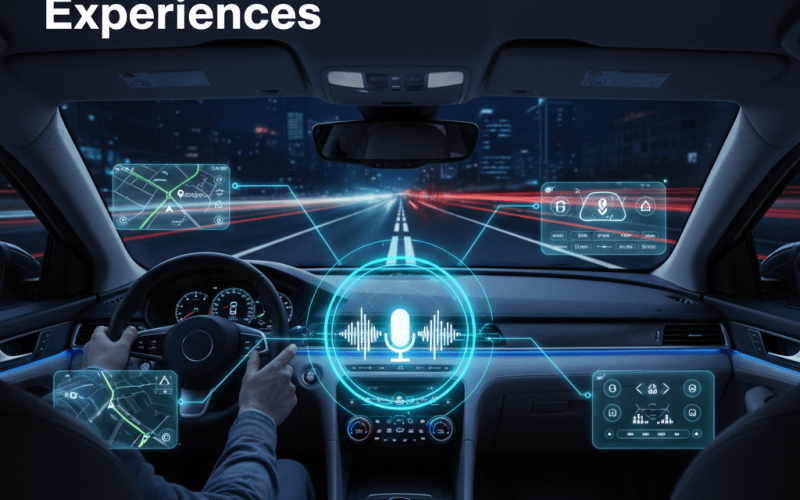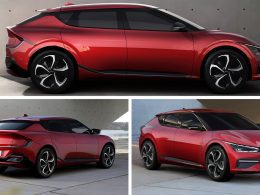Introduction
Over the past decade, the automotive industry has undergone a digital transformation that’s as rapid as it is revolutionary. From touchscreens to telematics, vehicles are becoming more like smartphones on wheels intelligent, connected, and personalized. Among these innovations, AI-powered voice assistants are emerging as one of the most impactful technologies enhancing both safety and convenience on the road.
As cars become smarter, the ability to control them through natural speech rather than physical interaction is proving to be a game-changer. From navigating routes to controlling temperature, making calls, or even checking vehicle diagnostics voice assistants are making driving safer, hands-free, and more intuitive.
For businesses developing smart automotive solutions, partnering with a reliable automotive app development company or Enterprise AI Development Company has become essential to stay ahead in this voice-first revolution.
Why Voice Assistants Are the Future of Automotive UX
Driving requires constant attention. Every second spent looking at a screen or fiddling with buttons increases the risk of distraction. According to the National Highway Traffic Safety Administration (NHTSA), distracted driving accounts for nearly 10% of all fatal crashes in the United States each year.
Voice assistants are designed to reduce that distraction by allowing drivers to interact with their cars through speech commands instead of touch or sight.
Imagine saying:
- “Play my road trip playlist,”
- “Find the nearest EV charging station,” or
- “What’s the tire pressure?”
all while keeping your hands firmly on the wheel.
By integrating AI-driven Natural Language Processing (NLP) and machine learning algorithms, automotive voice assistants can interpret user intent, respond intelligently, and even predict driver preferences based on patterns and habits.
How AI Enhances Voice Assistants in Cars
At the core of every smart voice assistant lies Artificial Intelligence, which enables the system to listen, understand, learn, and respond naturally. Let’s explore how AI powers this transformation:
1. Natural Language Understanding (NLU)
AI allows automotive voice assistants to comprehend human language in context — even with regional accents, slang, or noise interference. This is critical in a moving vehicle environment where external noise levels vary constantly.
2. Contextual Awareness
Modern AI voice assistants go beyond one-off commands. They remember previous interactions, understand context, and tailor responses accordingly. For example, if you ask, “What’s the traffic like?” followed by “And how long will it take to reach home?”, the assistant understands that “home” refers to your saved address.
3. Personalization
Through machine learning, voice assistants can learn from user behavior from preferred routes to favorite radio stations or frequently visited gas stations and suggest relevant actions automatically.
4. Edge AI for Faster Response
Many automotive systems now use Edge AI, processing voice commands locally within the car’s system instead of relying solely on cloud servers. This reduces latency and ensures real-time responsiveness, even in low-network areas.
5. Integration with Vehicle Systems
Voice assistants can interface directly with in-vehicle infotainment systems, navigation software, and IoT-enabled components, giving users command over nearly every aspect of the driving experience from temperature settings to headlights and parking sensors.
Real-World Applications of Voice Assistants in the Automotive Industry
AI-driven voice assistants are not just theoretical they are already reshaping the automotive ecosystem. Leading manufacturers like Tesla, BMW, Mercedes-Benz, and Ford have integrated their own smart assistants, while others collaborate with tech giants like Google Assistant, Alexa Auto, and Apple Siri.
Here are some real-world use cases transforming everyday driving:
1. Navigation and Traffic Updates
Drivers can request alternate routes, traffic updates, or ETA predictions using voice commands. AI ensures results are contextual and precise, factoring in live traffic data and user preferences.
2. Entertainment Control
Instead of manual input, drivers can simply say, “Play jazz music,” or “Switch to Bluetooth mode.” Voice control minimizes screen interaction and enhances focus.
3. Vehicle Diagnostics
AI assistants can provide real-time feedback on tire pressure, fuel levels, or engine health. Some even suggest nearby repair centers or automatically schedule maintenance appointments.
4. Emergency Assistance
In emergencies, voice assistants can detect distress commands like “Help!” or “Call 911,” using AI-based sentiment analysis to recognize urgency and respond instantly.
5. Smart Home Integration
With connected ecosystems, users can control home devices from their car turning on lights, adjusting thermostats, or opening garage doors all via voice commands.
How Automotive App Development Companies Enable This Evolution
Behind every intelligent voice interface lies robust app architecture and AI integration. A specialized automotive app development company plays a crucial role in building the technology that connects the driver, the vehicle, and the digital ecosystem.
Here’s how these companies contribute:
1. Custom Voice Assistant Development
Developers design voice-enabled apps tailored to specific vehicle models or brand ecosystems, integrating APIs like Alexa Auto SDK, Google Voice API, or Cerence Drive.
2. AI & NLP Integration
Partnering with an Enterprise AI Development Company ensures the deployment of advanced AI frameworks TensorFlow, PyTorch, or OpenAI APIs to create context-aware and adaptive voice systems.
3. Cross-Platform Connectivity
Automotive app developers ensure seamless communication across Android Auto, Apple CarPlay, and in-dash infotainment systems, creating a unified experience for all users.
4. Safety & Compliance
These companies ensure that AI-driven features meet strict automotive safety and privacy standards, such as ISO 26262 for functional safety and GDPR compliance for data handling.
5. Predictive Analytics & Continuous Learning
AI models are continuously trained to learn from user interactions. Developers use analytics to refine the assistant’s accuracy, personalization, and natural tone over time.
Benefits of AI-Powered Voice Assistants in Cars
The adoption of voice-driven automotive technology is not just a luxury — it’s a strategic move toward safety, accessibility, and smarter mobility.
1. Reduced Driver Distraction
Voice control allows drivers to perform complex tasks without taking their eyes off the road, significantly reducing accident risks.
2. Hands-Free Convenience
From texting to navigation, every command is executed via voice, ensuring effortless multitasking during commutes or long drives.
3. Enhanced Personalization
AI learns and adapts to user preferences, offering a tailored driving experience that feels intuitive and human-like.
4. Improved Accessibility
Voice interfaces make vehicles more accessible to people with mobility or vision impairments, promoting inclusivity in the automotive industry.
5. Brand Differentiation
Automakers can leverage AI assistants to create unique in-car experiences, strengthening brand loyalty and technological leadership.
The Role of Enterprise AI Development Companies
While automotive app developers focus on the user interface and mobile integration, Enterprise AI Development Companies provide the AI backbone that powers the intelligence of these systems.
They specialize in:
- Training large-scale NLP models for automotive voice systems
- Building AI inference engines that run efficiently on embedded hardware
- Ensuring data security and on-device learning for privacy compliance
- Integrating multimodal AI that combines voice, gesture, and emotion recognition
By collaborating with enterprise-grade AI partners, automakers can deliver scalable, secure, and future-ready voice-enabled experiences across their vehicle lineups.
Future of Voice in the Automotive Industry
The future of automotive voice technology is heading toward multimodal interaction, where voice, vision, and touch converge into a seamless ecosystem. Here’s what’s next:
- Emotion AI: Detecting driver stress or fatigue and suggesting rest stops.
- Predictive Commands: AI predicting what you’ll ask based on previous habits (e.g., automatically playing a podcast when you start your morning drive).
- Multilingual Conversational AI: Supporting diverse linguistic profiles for global users.
- Edge-Cloud Hybrid AI: Faster and more secure processing of voice commands with minimal data transfer.
- Vehicle-to-Everything (V2X) Integration: Allowing drivers to interact vocally with other vehicles or infrastructure (e.g., traffic lights or toll gates).
In essence, cars will evolve from voice-enabled assistants to autonomous companions capable of understanding not just what drivers say, but also what they mean.
Conclusion: Driving Toward a Smarter, Safer Future
Voice assistants represent the next leap in automotive innovation blending AI, machine learning, and human intuition into one cohesive driving experience. As road safety and convenience take center stage, automakers and tech developers alike must prioritize AI-driven voice interaction as a key feature of modern mobility.
By partnering with a trusted automotive app development company and a skilled Enterprise AI Development Company, businesses can harness the power of intelligent voice technology to create vehicles that listen, learn, and respond just like a human co-pilot.
The result? A future where driving isn’t just about getting from one place to another it’s about engaging in a smarter, safer, and more connected journey.












